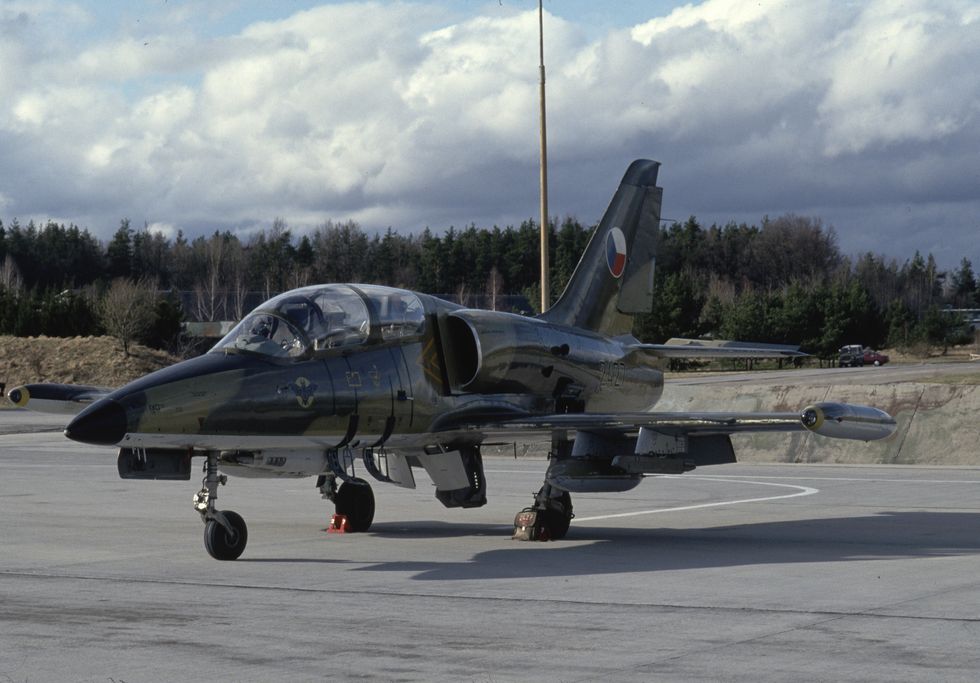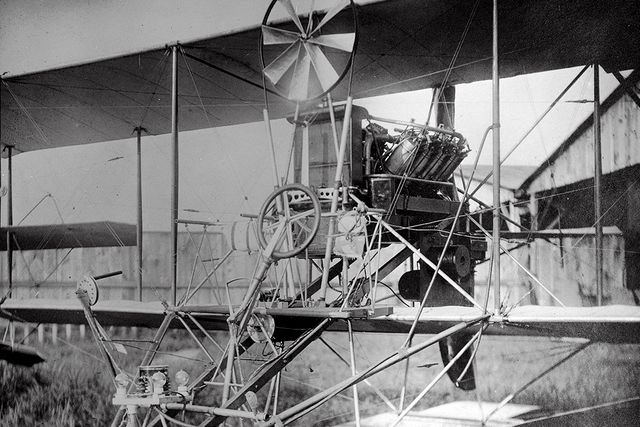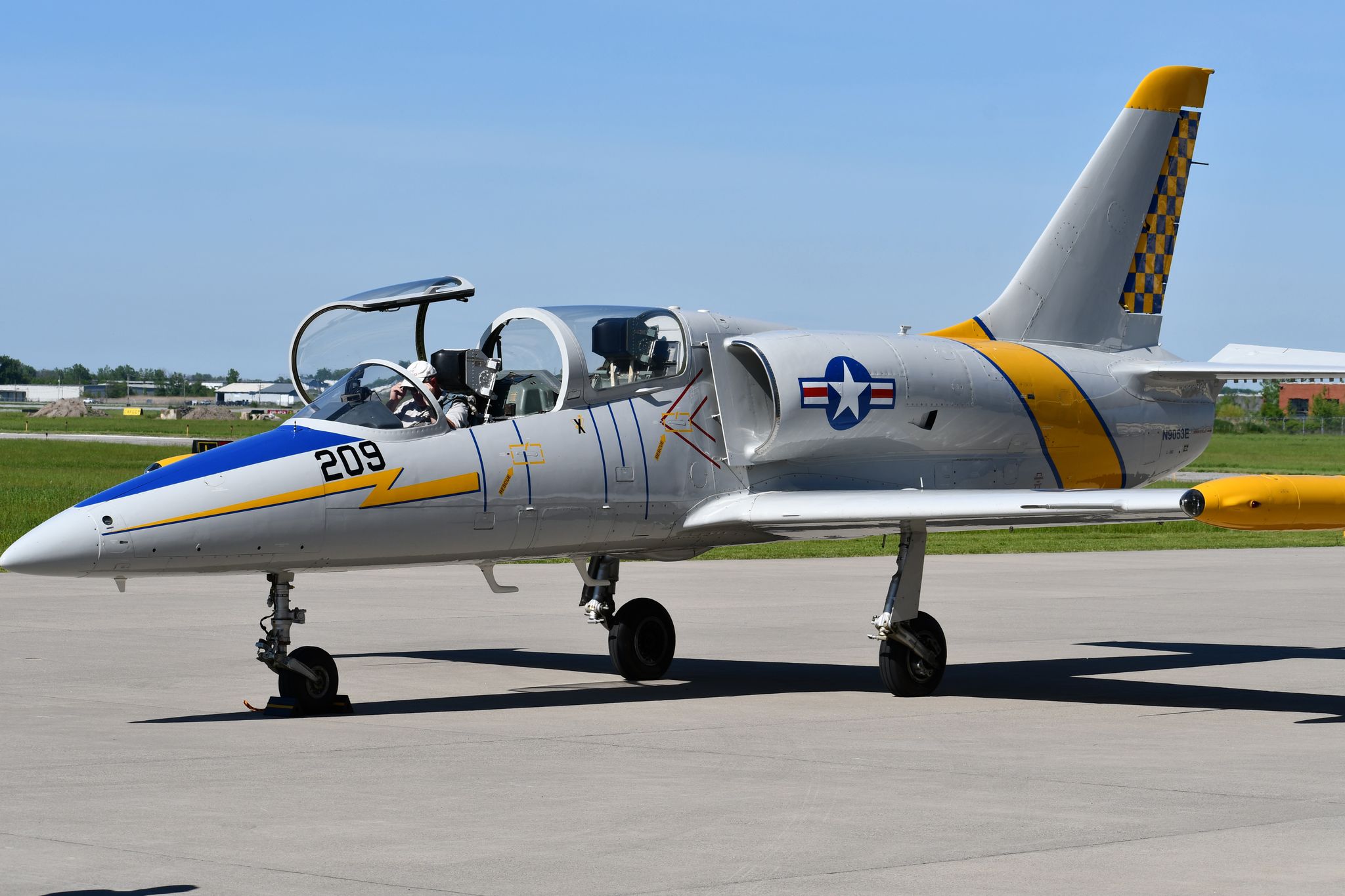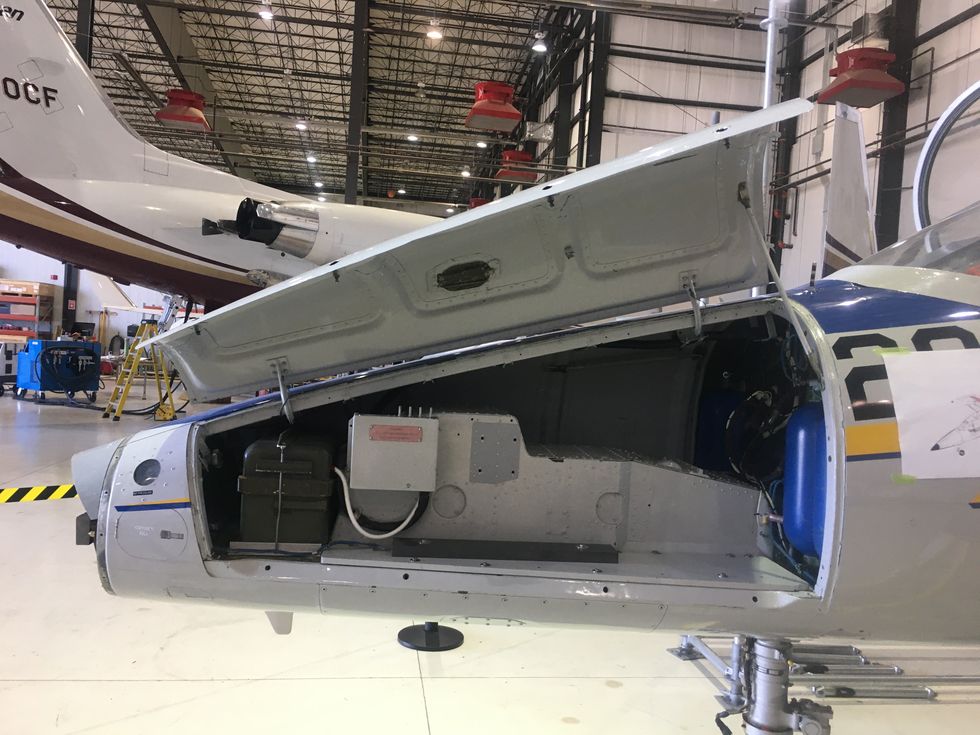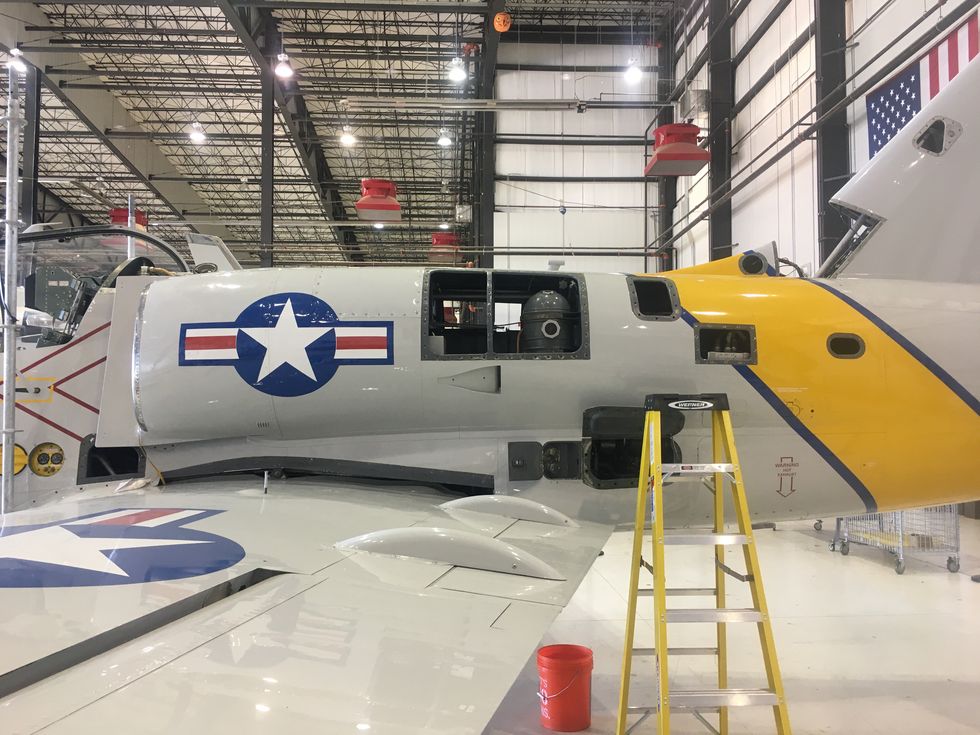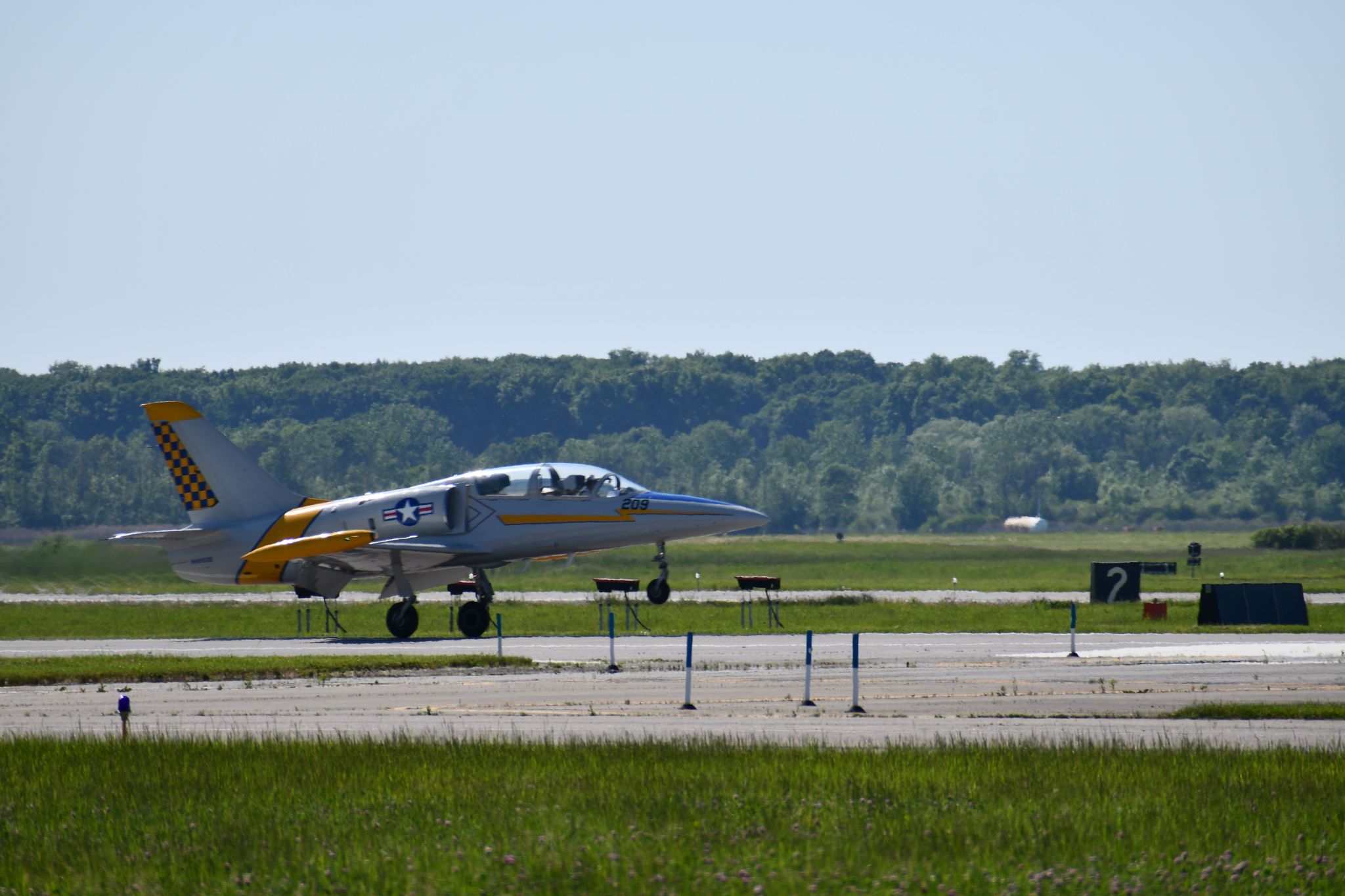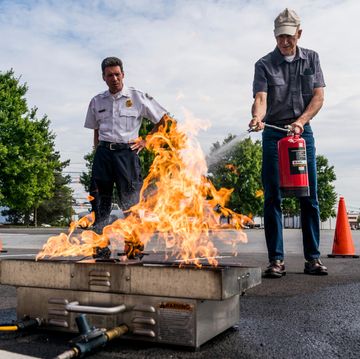Artificial intelligence has arrived on the battlefield. Powerful algorithms are decoding vast amounts of data, looking for patterns and anomalies in nuclear weapons activity, and running on vehicles like the Army’s upcoming Optionally Manned Fighting Vehicle and the Air Force’s Skyborg drone program.
And after a long wait, AI is also entering the cockpit.
In August 2020, DARPA’s AlphaDogfight trials—a series of AI experiments inside a simulated fighter jet cockpit—pitted an Air Force F-16 pilot against an AI pilot in a virtual dogfight. In a blow to fighter pilot egos everywhere, man lost to machine...five times in a row.
But it wasn’t a real battle. Nobody knows that better than USAF Colonel Dan “Animal” Javorsek, the manager for DARPA’s Air Combat Evaluation (ACE) program.
“We envision a future in which AI handles the split-second maneuvering during within-visual-range dogfights, keeping pilots safer and more effective,” Javorsek said at the outset of the ACE program.
Javorsek is a former F-22 Raptor test pilot who says ACE is about “building trust” in AI among human pilots, whether it’s used as a digital assistant, the brain behind an unmanned drone, or, maybe one day, as a dogfighter itself. A critical step in building that trust is proving that AI can pilot a real tactical aircraft, and DARPA is taking that step with flight test and engineering firm, CALSPAN.
But putting the “ghost in the machine” isn’t straightforward. An AI pilot will need to jump over a long list of hurdles to be considered a Top Gun.
Building the Body
The stuff of dreams may be an AI ace in a fully digital manned platform like the Air Force’s NGAD combat aircraft, but the L-39 Albatros jet trainer is much more down-to-earth.
Built in the late 1960s by the Czechoslovakian aerospace company AERO Vodochody, the Albatros remains the most widely used jet trainer in the world with over 2,900 built and flown by over 30 air forces. It’s a maneuverable but relatively tame two-seat 450 mph trainer, but its low cost makes it a perfect test platform.
Instead of the digital fly-by-wire flight control systems common in modern airplanes, the Albatros has a mechanical flight control system with rod-actuated controls. The L-39s being used in ACE have an autopilot (or “george” as pilots tend to call these limited autonomous systems) developed by CALSPAN that can independently operate those controls.
Aero Vodochody L-39 Albatros
The virtual AI pilots learning to dogfight CALSPAN L-39C Albatros jet trainers in DARPA’s ACE program will join tens of thousands of human pilots who cut their teeth learning to fly the Albatros. The two-seat, single-engine airplane is the most widely used jet trainer on earth with over 30 air forces having used the more than 2,900 examples produced beginning in 1971.
A newer model of the jet (the L-39NG) continues to be built by Czech firm, Aero Vodochody, whose origins stretch back to the establishment of Aero Tovarna Letadel outside Prague in 1919 in what was then Czechoslovakia. Powered by an Ivchenko AI-25TL turbofan engine with 3,800 pounds of thrust, the L-39C has a top speed of about 470 mph and its easy handling qualities, rugged construction and simplicity are praised by western and eastern pilots like.
The Soviet Union alone acquired over 1,000 L-39s and 200 or so remain in the Russian Air Force. The USSR’s breakup flooded the global market with L-39s with hundreds for sale. Many ended up in civilian hands including about 250 registered in North America. Generally priced from $250,000 to $400,000, they’re popular sport planes, dominating the Jet Class at the Reno Air Races.
But this system is more capable than your typical autopilot. CALSPAN’s autopilot uses actuators to manipulate the mechanical flight controls through their full range rather than the limited turn, climb, and descend inputs of traditional autopilots.
You can think of CALSPAN as supplying the hardware (four jets and autopilots) through which the algorithms can be tested and honed.
In the ACE experiment, an interface between the artificial intelligence program and CALSPAN’s George will translate commands such as bank angle and airspeed into stick and throttle inputs to provide the AI with the desired aircraft state.
“Think of it as a robot sitting in the seat, moving the stick for the pilot. That’s what we’re doing,” says Brian Ernisse, CALSPAN’s chief technology officer and experimental test pilot.
The stick, throttle, and rudder pedals will move in the cockpit as the AI-enabled George flies the L-39, like a ghostly pilot sitting snug behind the controls. The combination creates “a very sophisticated autopilot,” Ernisse explains. “Instead of just flying headings and altitudes, it can do aerobatic maneuvers.”
Other providers will supply the AI and the user interface that pilots will employ. But first, CALSPAN will have to supply them with a complete aerodynamic model of the L-39.
Unlike its human counterpart, AI doesn't have an instructor pilot, a technical manual, or even previous experience to teach it how to fly the L-39. So it needs a lot of data on how one actually flies—a full aerodynamic model with speeds, G-loads, angle-of-attack and stall/spin characteristics, and a host of other aero/control data to learn from. CALSPAN’s company pilots are already flying sorties to gather all this aero data.
Once they have the complete model, they’ll give the keys to the AI engineers.
Molding the Mind
Virginia-based Heron Systems is one of several AI developers working on ACE. Heron’s AI pilot called “Falco” (named for a character in the video game Star Fox) beat the USAF pilot (and other AI) in the AlphaDogfight trials.
Falco learned to dogfight like a human does, by first exploring how to control an aircraft and then how to maneuver against another simulated airplane. Heron engineers used a training architecture called proximal policy optimization which rewards AI for learning (obtaining a track angle or closing distance to target) and a virtual network of competing AI pilots.
For the AlphaDogfights, Falco trained in simulated air combat over five weeks in 100 millisecond blocks of time, taking four billion steps. The process amounted to 31 years of basic fighter maneuvers (BFM) flight training, according to Heron Systems’ vice president Brett Darcey.
“We’ll take our training factory that we used to build the AI and instead of using an F-16 aero model, we’ll use the L-39 aero model,” Darcey says. Other AI providers will essentially do the same. Until they get the complete model from CALSPAN, Heron is practicing its transition from a virtual environment to a scaled real environment using a small Talon UAV.
Darcey calls this the “sim-to-real challenge.” While a simulated environment inevitably has some irregularities, it can’t compare to all the variables in the real world. AI developers will have to vary the machine learning their virtual pilots do to account for the serious differences.
The History of “George”
The idea of automating the task of flying goes back to the early days of powered flight when the instability of primitive airplanes required a pilot’s constant attention, leaving almost no room for anything else.
The first autopilot was developed in 1912 by Sperry Corporation and demonstrated by Lawrence Sperry in Paris in 1914. By connecting a gyroscopic heading indicator and attitude indicator to hydraulically operated elevators and rudder, it allowed an airplane to fly straight and level on a chosen compass course without input from a pilot.
Development up to WWII incorporated control algorithms and radio navigation aids, enabling automated flight at night and in poor weather. Around that time, pilots started referring to autopilots as “George” possibly in reference to American inventor George DeBeeson who patented an autopilot in the 1930s or to British King George VI. By 1947, a U.S. Air Force transport took off, flew across the Atlantic, and landed solely under the control of an autopilot.
Modern three-axis (roll/pitch/yaw) autopilots generally automate takeoff, climb, cruise, descent, and landing using a variety of sensors as well as GPS and inertial navigation. Unlike the AI agents in development, their ability to dynamically maneuver or respond to actions of other aircraft or objects is limited.
“We think that this is a very real challenge, something that’s going to require a lot of work and a lot of innovation to get there,” Darcey says.
While a complete aero model is key to Falco’s ability to learn to fly the L-39 and apply its BFM training tactically, so is teaming with George. To do so effectively, Falco will have to learn to anticipate the time it takes for the jet to respond to its commands.
“You can assume that those servos and the act of moving the stick is going to introduce control latency that may or may not be modeled,” Darcey says. “That’s a great example of where the model will break down, where the sim-to-real problem appears.”
Human pilots learn to anticipate aircraft responses based on experience from flying different airplane types, even different airplanes of the same type. Falco won’t have any previous flight experience in the L-39 or interfacing with George.
“It’s a DARPA-hard problem for a reason,” Darcey says.
The Human in the Machine
Once integrated into the cockpit, AI could allow human pilots to do other combat operations, like configure weapons systems while it flies the airplane—even when engaged in a dogfight. But that’s a far future scenario, so what will the humans in CALSPAN’s L-39s be doing in the here and now?
Pilots will occupy both seats in the Albatros. In the front seat, an evaluation pilot—an Air Force or Navy test pilot with current tactical fighter experience—will use specially developed displays to interact with AI/George and try to take on other tasks like battlespace management. A CALSPAN pilot will occupy the rear seat, acting as safety pilot with the ability to turn the AI system on or off and to make sure all aspects of flight are safe.
Both pilots will have an AI autopilot button on the control stick for summoning (and dismissing) its AI pilot.
“If the pilot doesn’t like what the AI is doing, he pushes a button and pauses it,” says Ernisse. “He will then manually fly the plane to whatever position he wants. Then he’ll let go of the button and the AI will resume from that position.”
The boxes containing the AI and autopilot will go into the L-39’s pointy nose. In the cockpits behind, the analog gauges found in a stock Albatros will be replaced entirely by a large digital display, a programmable glass panel with multiple configurations. In tandem with a helmet-mounted display, it will have the user interface for the AI pilot designed by Soar Technologies.
Glenn Taylor, Soar Tech’s principal investigator for ACE, says they have yet to fully determine how to present info from an AI pilot to a human one, whether through graphics, voice, haptics, or a combination of the three. Another question is figuring out how much information to convey to a pilot who may be focused on another task.
“Understanding what those attention limits are and how much we can or can’t put in front of a pilot is definitely a challenge” Taylor says. “We can’t just block a pilot’s view out of the cockpit [with imagery] for example.”
The user interface will likely need to give the pilot a “forward look,” which tells the human pilot how AI is going to maneuver the airplane over the next few seconds and why.
“I asked, how far in advance do you want to know that a maneuver is coming?” Darcey says. “The pilots said it depends. How high-G a maneuver is it?”
The Sky Has Limits
Not surprisingly, there are potential limits to human-AI cooperation. ACE is expected to end in mid 2023 and those involved acknowledge that there’s a lot we don’t know about going from a structured virtual engagement to a messy fight with real jets.
Falco or other AI pilots will need real-time aerodynamic, acceleration/G, and relative position data for decision-making. Accordingly, sophisticated airspeed and angle-of-attack sensors, embedded GPS and datalinks with full, open spatial data are being installed on the L-39s. As in the virtual AlphaDogfights, AI will have full information of what an adversary aircraft is doing, including maneuvering and trajectory.
“This [initial] experiment is not about figuring out how to use sensors,” Ernisse says. “That would be another phase of this, how to know where a non-cooperative target is and what it’s doing.”
Later in the program the jets will become less cooperative, offering less spatial data and requiring installation of sensors (radar/lidar/infrared) that pilots and aircraft now use to fight.
Sensors will be central in determining how well human pilots can function when Falco and George take over. State-of-the-art physiological monitors—from eye trackers to electrocardiogram electrodes and Respiratory Inductive Plethysmography bands—will track pilot attention, stress, and cognitive function.
This data will help put an answer to whether pilots can really handle other tasks while AI takes on all dogfighting responsibilities. “I’m skeptical myself,” Ernisse acknowledges, “but that is part of the experiment. I think that’s part of what DARPA’s trying to figure out. Will this work or are there physiological things that will prevent it from going forward?”
DARPA and its partners will find out in a series of flights that incrementally teach AI to fly and maneuver the L-39s, establish initial dogfighting positions, progress through a few basic counter-maneuvers in a one-on-one scenario, and ultimately a full engagement.
They’ll advance all the way to a manned-unmanned team of two L-39s against a single non-cooperative L-39 adversary with variable skill, even a live 2v2 contest “where two performers strive to develop a human-machine team that dominates the other,” says DARPA’s program manager.
Whether all of that can happen by 2023 remains a question as does the ability of humans to really trust the AI. “We anticipate that when at close range or defensive against a capable adversary little attention will be paid [by the human pilot] to the larger battle management task,” Javorsek says.
Heron’s Darcey says that dogfighting is “really just the sexy scenario that allows you to get the funding,” but the core of the exercise is figuring out how to build these AI pilots and whether they can transfer to real systems.
“Once you get past that, what you can do with them is an open question.”



